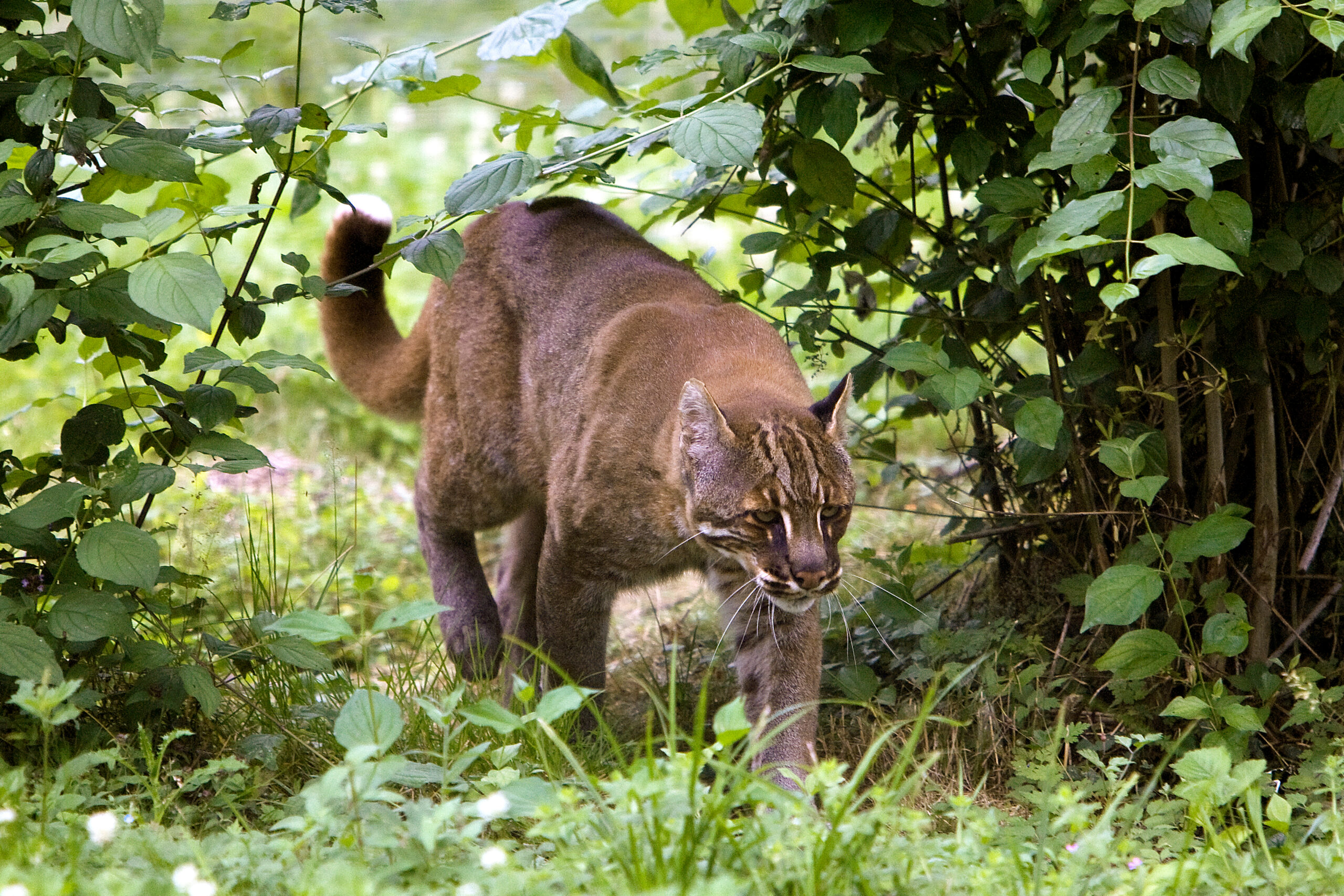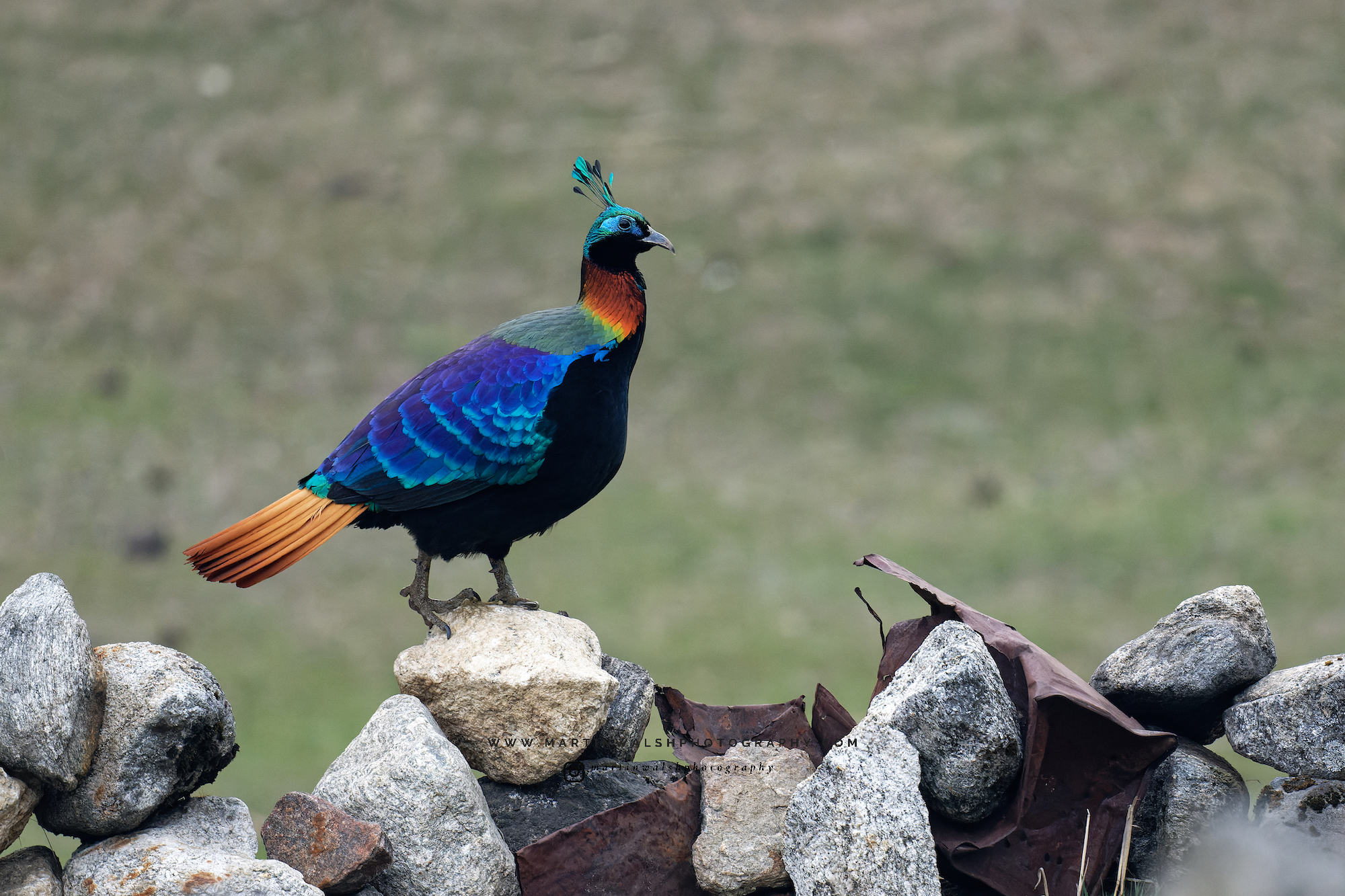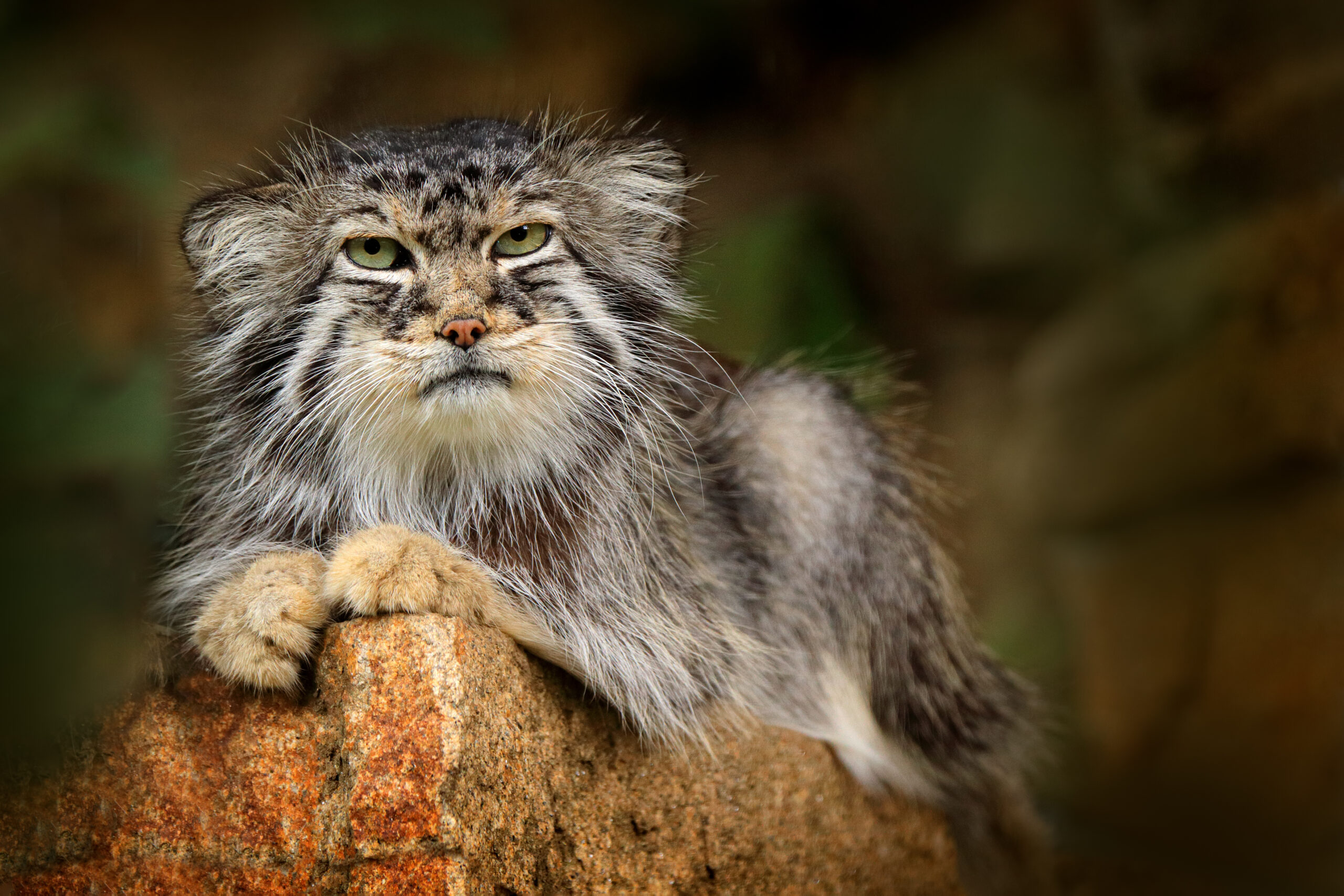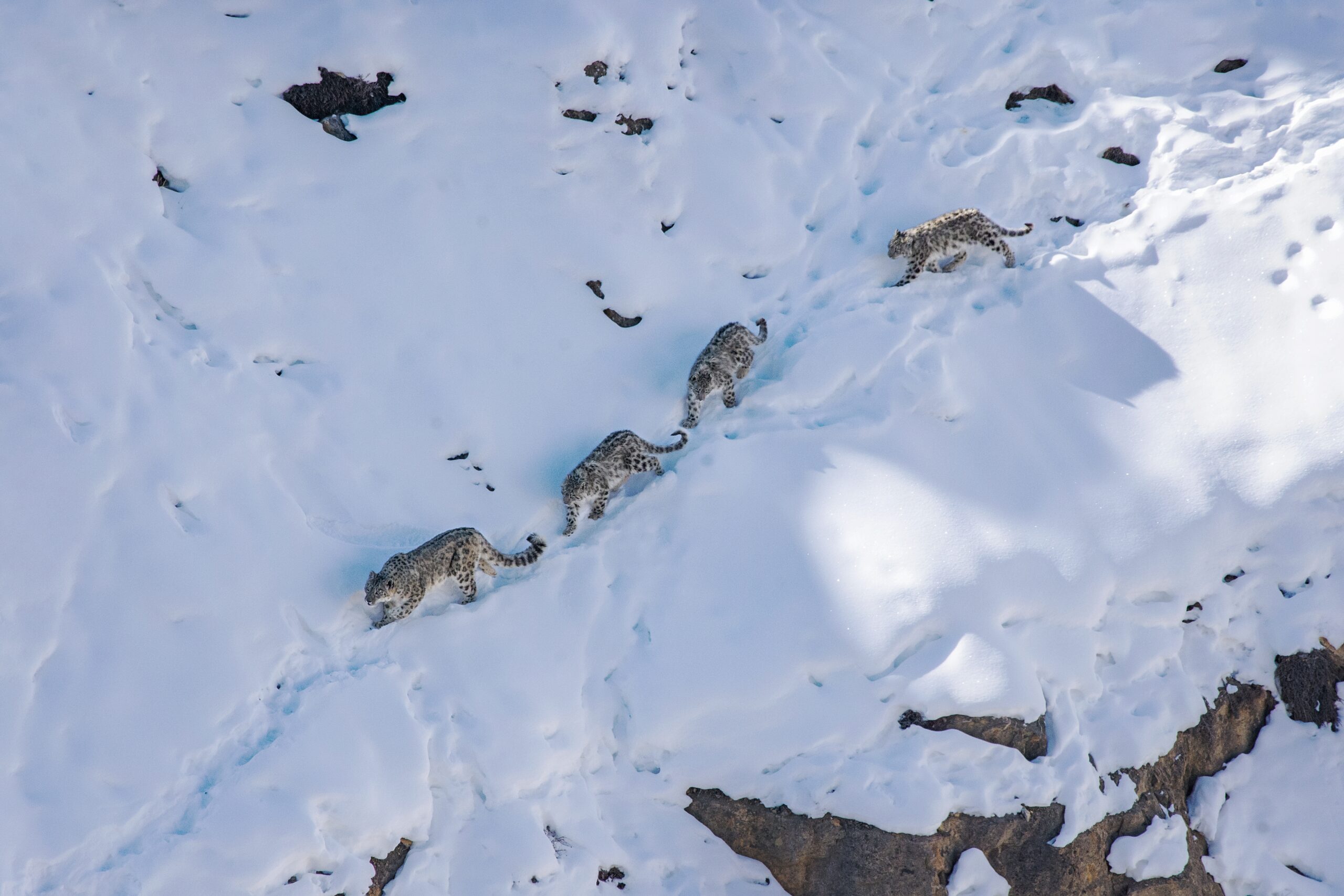Most visitors don’t consider the Himalaya a wildlife destination, but the world’s highest mountains hold a surprising amount of diversity.
From snow leopards and grumpy Pallas’s cats to blood pheasants and red pandas, here are some of the places wildlife watchers head for mountain wildlife.
Hemis National Park, Ladakh, India
Hemis covers 4,400 square kilometers a vast swathe of rugged, high-altitude desert between 3,000 and 6,000m in Ladakh, India.
The park holds a stable population of argali, urial, and bharal (all wild sheep species). These are nice to spot, but for most visitors, they are more important for what they represent: big cat food. An abundance of prey supports an estimated 200 snow leopards in Hemis, which might be the highest density of any protected area in the world.
For a long time, wildlife watchers regarded seeing a wild snow leopard as almost impossible. Evidence of their presence (scat, territorial markings, paw prints) was easy enough to find, but actually spotting the ghost of the Himalaya was a tall task. Sightings required insane luck or months, if not years, of work.

Well camouflaged, your best chance of spotting a snow leopard is on a ridgeline. An adult snow leopard in Hemis National Park. Photo: Vincent Legrand/Shutterstock
Now, things are much easier. Increased knowledge of territories and habits revealed that snow leopard sightings were not just possible but likely, given enough time. You needed to be in the right place at the right time. And you will need to spend long hours in the cold.
Sightings generally require at least a few days spent scouring ridges and cliff faces at dawn and dusk. It’s cold, uncomfortable work, but the potential payoff for photographers and wildlife enthusiasts is worth the effort.
And sightings aren’t restricted to big national parks like Hemis. In remote Ladakhi villages, residents will tell you that they regularly see the cats. Locals have shown me phone camera videos of snow leopards practically close enough to touch, stalking past houses and leaping dry-stone walls (and occasionally taking domestic livestock — leading to some human-wildlife conflict). As a result, some of these out-of-the-way hamlets now draw tourists for week-long stays.
Eagle’s Nest, Arunachal Pradesh, India
Foreigners require special permission to visit Eagle’s Nest in Arunachal Pradesh. This means it’s not a cheap trip, despite only basic accommodation at two campsites. However, it continues to attract adventurous wildlife enthusiasts because the area has built a strong reputation for unusual wildlife sightings.
Named after an old military base (formally occupied by the “Eagles” unit), the area is particularly popular with birders. In 2006, researchers described a new species of liocichla from here. Ornithologists named it the Bugun liocichla after a local ethnic group. With evidence of only 10 breeding pairs, it is critically endangered.
Though it has long been a birding destination, it has only recently caught the attention of mammal watchers. The road between the two campsites has proved productive for some hard-to-see nocturnal species, including mega-rarities like clouded leopards and golden cats.

Asian golden cat. Photo: Shutterstock
Sagarmatha National Park, Nepal
More than just Everest, Sagarmatha National Park is surprisingly busy with wildlife. Despite the heavy foot traffic during trekking and climbing season, you can see many pheasant and grouse species, including blood pheasants and the national bird of Nepal, the monal. Commonly seen mammals include Himalayan musk deer and Himalayan tahr.
Humans wiped out snow leopards here in the 1970s through overhunting, both of the cats and their prey. A small number have returned over the last half century as the prey species have rebounded. However, sightings remain extremely scarce.

A Himalayan Monal, Nepal’s national bird, struts its stuff near Namche Bazaar. Photo: Martin Walsh
Langtang National Park, Nepal
Established in 1976, Langtang was the first-ever Himalayan National Park. Its proximity to Kathmandu (it starts just 30km from the capital and stretches to the China-Tibet border) makes it easy to visit independently.
It has a reputation as a good spot to find red pandas and is fantastic for birds (373 species recorded) because of lakes such as Gosainkunda. Commonly observed mammals include Himalayan tahr, Himalayan musk deer, Assam macaque, and Nepal sacred langur.
While most wildlife-focused visitors to Nepal head to Chitwan National Park or Bardiya National Park down in the Terai, it’s worth combining a visit with some hiking to look for mountain specialist species.

An alpine accentor above 5,300m. Photo: Martin Walsh
Hengduan Mountains and the Tibetan/Himalayan Plateau, China
Though they are not technically the Himalaya, I’m lumping the Hengduan mountains of Sichuan and neighboring areas of the Tibetan Plateau into this list.
This is one of the best regions in the world to see an array of cat species. Pallas’s cat (the manul), Eurasian lynx, snow leopard, Chinese mountain cat, and leopard are all possible here. Asian brown bears and wolves are not uncommon. Tantalizingly, it is also one of the few places where you might spot a wild panda.

Pallas’s cat. Photo: Shutterstock
National parks are a new concept in China. The government revealed five initial national parks in 2021. One of these was Giant Panda National Park, an effort to unite a sprawling group of 81 existing nature reserves. Tangjiahe Nature Reserve in the Hengduan Mountains is part of the park’s core area. The elevation ranges from 1,150m to 3,837m and features a mix of dense bamboo and subtropical forest. It is an important panda habitat.
Sightings are extremely difficult, and those who do spot a wild panda are reluctant to reveal exactly where sightings took place. Researchers estimate that there are 39 pandas in the reserve.
Other charismatic megafauna present include golden snub-nosed monkeys and Tibetan takin, a species of goat-antelope.






